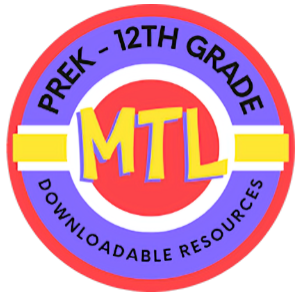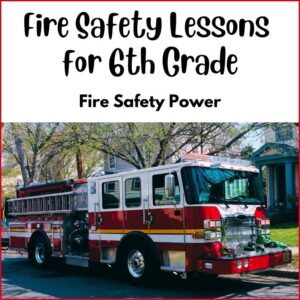Category: Newest Resources
- Home
- /
- Shop
- /
- Newest Resources
- /
- Page 6
Showing 101–120 of 385 resultsSorted by latest
-
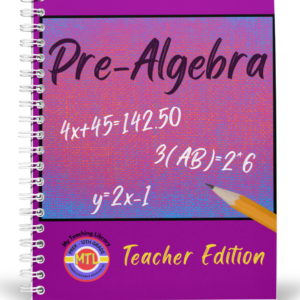 $9.99Buy Now
$9.99Buy NowThis is the Teacher Edition for Pre-Algebra. Pre-Algebra is an easy to follow and understand, straight forward math curriculum! Suggested use: 8th Grade (May also be used for advanced 7th grade students or during the 9th grade year if students are not math focused.) This is a pdf download and consists of 344 pages. For each unit (below), this TE consists of a unit focus, a lesson purpose, suggestions for enrichment, a unit assessment and all answer keys.
Units include:
Unit 1: Number Sense, Concepts and Operations
Unit 2: Measurement
Unit 3: Algebraic Thinking
Unit 4: Geometry and Spatial Sense
Unit 5: Data Analysis -
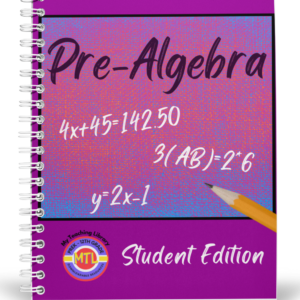 $12.99Buy Now
$12.99Buy NowPre-Algebra is an easy to follow and understand, straight forward math curriculum! Suggested use: 8th Grade (May also be used for advanced 7th grade students or during the 9th grade year if students are not math focused.) This pdf download consists of 700 pages of teaching text and practice questions. This is a large curriculum and can be split between 2 years if student needs to do so.
1. Download a preview sample
2. Download the Table of ContentsUnits include:
Unit 1: Number Sense, Concepts and Operations
Unit 2: Measurement
Unit 3: Algebraic Thinking
Unit 4: Geometry and Spatial Sense
Unit 5: Data Analysis(Teacher Edition available!)
See DESCRIPTION below for further details. -
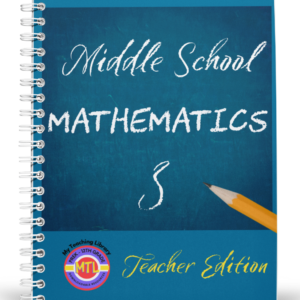 $9.99Buy Now
$9.99Buy NowThis is the Teacher Edition for Middle School Mathematics 3. Mathematics 3 is an easy to follow and understand, straight forward math curriculum! Suggested use: 8th Grade (or advanced 7th)
This is a pdf download and consists of 206 pages. For each unit (below), this TE consists of a unit focus, a lesson purpose, suggestions for enrichment, a unit assessment and all answer keys.Units include:
Unit 1: Number Sense, Concepts and Operations
Unit 2: Measurement
Unit 3: Geometry
Unit 4: Creating and Interpreting Patterns and Relationships
Unit 5: Probability and Statistics -
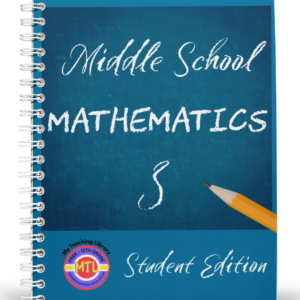 $9.99Buy Now
$9.99Buy NowMiddle School Mathematics 2 is an easy to follow and understand, straight forward math curriculum! Suggested use: 8th Grade (or Advanced 7th)
This pdf download consists of 533 pages of teaching text and practice questions. (Download a preview sample)Units include:
Unit 1: Number Sense, Concepts and Operations
Unit 2: Measurement
Unit 3: Geometry
Unit 4: Creating and Interpreting Patterns and Relationships
Unit 5: Probability and Statistics -
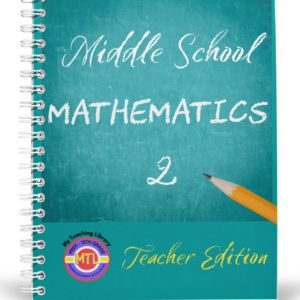 $9.99Buy Now
$9.99Buy NowThis is the Teacher Edition for Middle School Mathematics 2. Mathematics 2 is an easy to follow and understand, straight forward math curriculum! Suggested use: 7th Grade
This is a pdf download and consists of 198 pages. For each unit (below), this TE consists of a unit focus, a lesson purpose, suggestions for enrichment, a unit assessment and all answer keys.Units include:
Unit 1: Number Sense, Concepts and Operations
Unit 2: Measurement
Unit 3: Geometry
Unit 4: Creating and Interpreting Patterns and Relationships
Unit 5: Probability and Statistics -
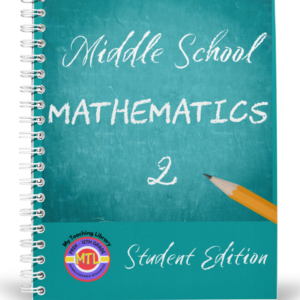 $9.99Buy Now
$9.99Buy NowMiddle School Mathematics 2 is an easy to follow and understand, straight forward math curriculum! Suggested use: 7th Grade (or advanced 6th Grade)
This pdf download consists of 417 pages of teaching text and practice questions.Units include:
Unit 1: Number Sense, Concepts and Operations
Unit 2: Measurement
Unit 3: Geometry
Unit 4: Creating and Interpreting Patterns and Relationships
Unit 5: Probability and Statistics -
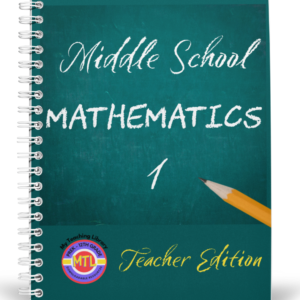 $9.99Buy Now
$9.99Buy NowThis is the Teacher Edition for Middle School Mathematics I. Mathematics I is an easy to follow and understand, straight forward math curriculum! Suggested use: 6th Grade
This is a pdf download and consists of 196 pages. For each unit (below), this TE consists of a unit focus, a lesson purpose, suggestions for enrichment, a unit assessment and all answer keys.Units include:
Unit 1: Number Sense, Concepts and Operations
Unit 2: Measurement
Unit 3: Geometry
Unit 4: Creating and Interpreting Patterns and Relationships
Unit 5: Probability and Statistics -
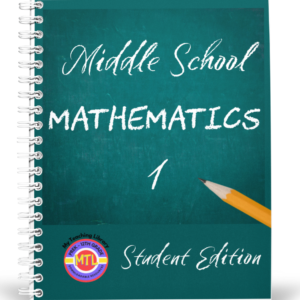 $9.99Buy Now
$9.99Buy NowMiddle School Mathematics I is an easy to follow and understand, straight forward math curriculum! Suggested use: 6th Grade
This pdf download consists of 422 pages of teaching text and practice questions.Units include:
Unit 1: Number Sense, Concepts and Operations
Unit 2: Measurement
Unit 3: Geometry
Unit 4: Creating and Interpreting Patterns and Relationships
Unit 5: Probability and Statistics -
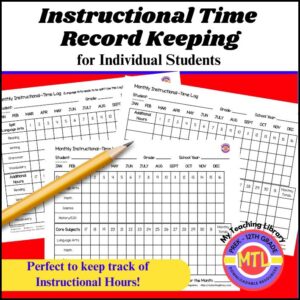 $2.50Buy Now
$2.50Buy NowAre you required to track instructional hours for each student that you teach? If so, this resource has been designed to give you the ability to keep track of instructional hours for both core and non-core subjects.
-
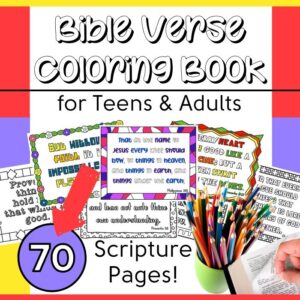 $10.00Buy Now
$10.00Buy NowDesigned for teens and adults, this Bible verse coloring book includes 70 ready to color pages. Each page includes a fun border and a verse ready to color.
-
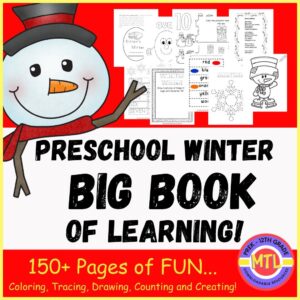 $8.00Buy Now
$8.00Buy NowThis winter themed BIG BOOK of activities will keep your preschooler busy with fun learning pages and have them coloring, tracing, drawing, counting, learning shapes and more! They’ll will love the snowmen and winter themed items throughout. There is even a fun poem about mittens and a mini-book to create!
-
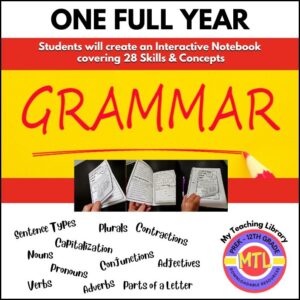 $12.00Buy Now
$12.00Buy NowThis resource provides a full year of grammar activities! Designed for 3rd grade students (or advanced 2nd grade or 4th graders who need additional practice), students will find 28 booklets covering important grammar skills. Each booklet will provide information and examples of the skill/concept for students to review. Students will then practice and implement the skill, show real world examples of the skill and then reflect and write in their own words what they have learned. Once each booklet is complete, they will then glue into a spiral notebook. At the end of the year, they will have a notebook full of grammar work! (See description below for a list of skills covered.)
-
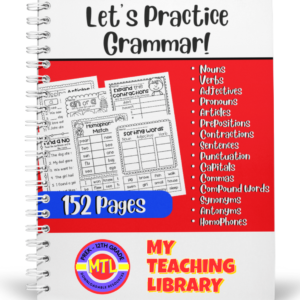 $8.00Buy Now
$8.00Buy Now- Let’s Practice Grammar includes over 150 pages of fun worksheets for students to practice and demonstrate their understanding of a variety of important grammar skills and concepts!
Including:
Nouns
Verbs
Adjectives
Pronouns
Articles
Prepositions
Contractions
Sentences
Punctuation
Capitalization
Commas
Compound Words
Synonyms
Antonyms
Homophones
- Let’s Practice Grammar includes over 150 pages of fun worksheets for students to practice and demonstrate their understanding of a variety of important grammar skills and concepts!
-
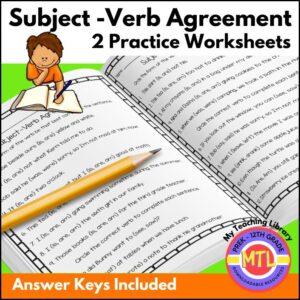 $1.25Buy Now
$1.25Buy NowTwo worksheets (with answer keys) to give students the opportunity to demonstrate their knowledge of subject-verb agreement in simple sentences. Students will identify and circle the correct form of the verb ‘be’ as well as forms of other verbs such as see/saw, leave/left/drink/drank, win/won, sit/sat, write/wrote.
-
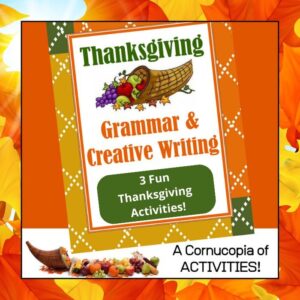 $1.00Buy Now
$1.00Buy NowThrow a little fun into your Language Arts plans this Thanksgiving with these three activities!
- Building sentences with nouns and adjectives
- Syllable work
- Writing a Thanksgiving themed limerick poem!
-
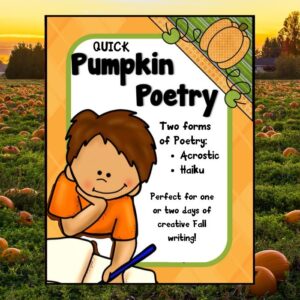 $1.00Buy Now
$1.00Buy NowThis resource is perfect for fun and quick poetry writing during the Fall! Students can write one or two different forms of poetry, acrostic and haiku, on pumpkin designed pages! The resource also includes an informational page about pumpkins.
-
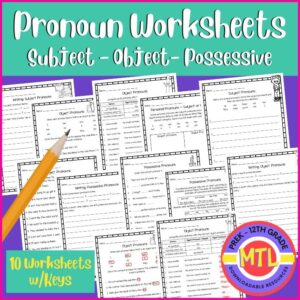 $3.25Buy Now
$3.25Buy NowThese worksheets are designed for students just learning about pronouns as well as those that are ready to show what they know! Three types of pronouns are covered: subject, object and possessive. Use of this resource will give students practice in recognizing, recalling, and using each type of pronoun.
Includes: 10 student worksheets + answer keys
-
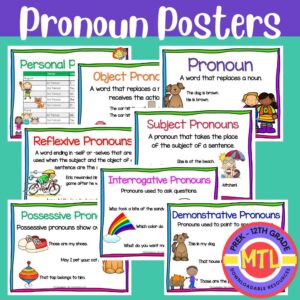 $3.50Buy Now
$3.50Buy NowHelp students learn about pronouns! These colorful grammar posters will teach students about pronouns, giving definitions and examples of personal, subject, object, possessive, reflexive, demonstrative and interrogative pronouns.
-
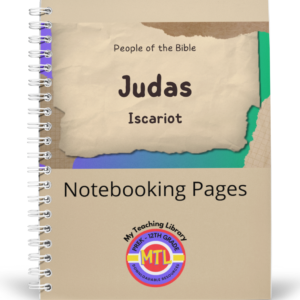 $5.00Buy Now
$5.00Buy NowJudas Iscariot was one of the 12 apostles of Jesus Christ. He infamously betrayed Jesus for 30 pieces of silver, which led to his death on the cross. Today, “Judas” is virtually synonymous for “traitor.” Judas appears in several New Testament stories. He was the treasurer of the disciples, a thief and, in the end, lived long enough to regret his decision to betray Jesus.
As students study Judas, they can use these beautifully designed pages to create a lasting project detailing what they have learned.
What’s included:
- – 11 notebooking pages specifically created for a study of Judas. They will be asked to answer questions such as the meaning of his name, who he was, detail life events, write about his character, document verses to remember, describe how his betrayal was revealed as well as why students believe he betrayed Jesus, detail notable interactions that revealed his character and his regret, describe how artists have depicted him and how the church remembers him. Students will also be asked to reveal and reflect on an action that caused them regret.
- – 10 pages to help provide guidance, structure and organization to the project
